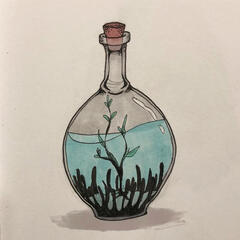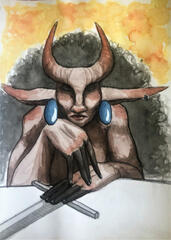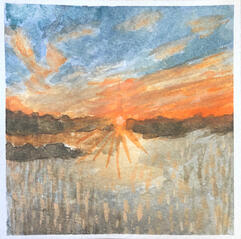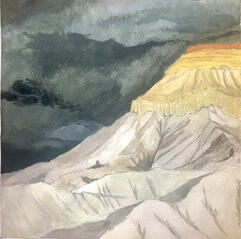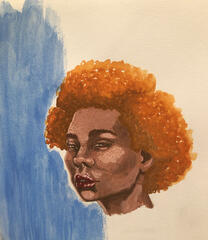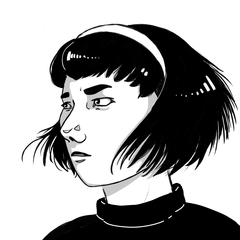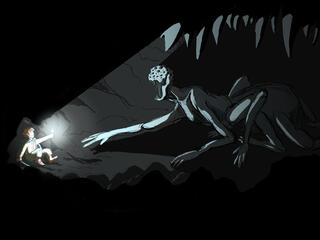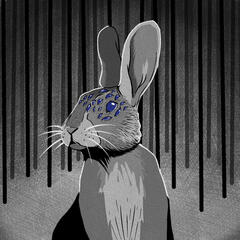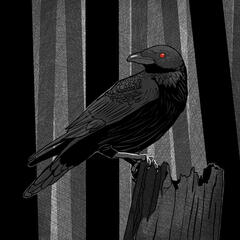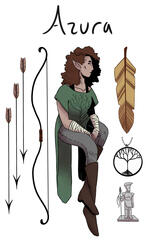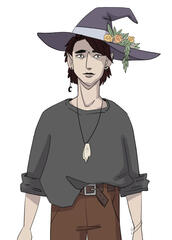ella sarina

artist, writer, game designer, jack of some trades
she/they
about
Hey, I'm Ella and I like to make things. I love games and poetry and horror and generally like to combine those in my work. I can paint and draw and sculpt a bit. I know basic css and html. I have clever hands for making bread and sewing and skittering across a keyboard. I can talk around in circles and it eventually makes sense, just trust me. I'm from all over the West but I usually just say Colorado, which means I love mountains and snow and the woods. I'm pretty full of love, as I'm sure you've guessed already. Thanks for checking out my stuff, feel free to reach out.
art
Romanticism and The Long Dark
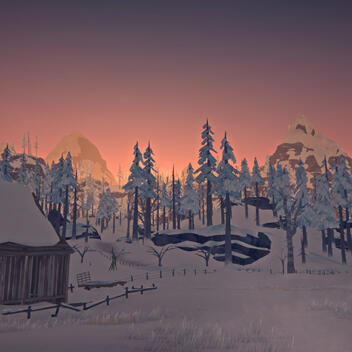
an essay examining the Romantic themes in the video game The Long Dark
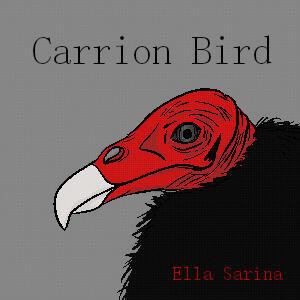
a zine about the body, its aches, and mean love
.................
Romanticism and The Long Dark
.................
.................One step more, I tell you. Snow crushes under your boots, growing wetter and colder. One step more. The frigid wind burns your eyes and nose, making them stream. You cannot feel your toes but you must push on. Crows cry in the distance, but otherwise it is quiet. I lean forward in my chair. My feet are cold too. Your stomach rumbles and I shove a granola bar into your mouth but it tastes like crunchy dust and just serves to make you thirstier. It’s the only thing you have left. You just have to continue. One step more. The frozen landscape stretches on, dazzling in the afternoon sun. Behind you, there is not much more than the tracks which mark your path. You breathe in and out, timing the puffs of fog with your steps. The air is crisp and clean and altogether too cold. Your lungs burn quietly. One step more. Time passes and evening creeps closer. You are getting tired. I check our map and you are close, I know it. You cannot see your destination, but perhaps over that next ridge? Another small hill passes and there is still no sign. Your face and fingers are numb and I know if you stay out much longer, you could get frostbite. There’s no going back after that. The howl of a wolf breaks us from our thoughts and I whip your head around, trying to catch a glimpse of the animal. I flicker to the map and we’re so close, god, so close but where is it? You break into a run, using the last of your strength. Growls and barks seem to be coming from all sides, you just keep moving forward, breath coming rapid and harsh. The heavy pack clunks and rattles on your back. A wolf snaps its teeth, ripping into the leg of your pants. You stumble for a moment, but keep running. A house. Our destination. I steer your flight and we make it to the door just in time, another animal on our heels. Inside, you wobble on your feet, trying to catch your breath. Blood pulses at the corners of your vision and you blink a few times to focus your eyes. The room is dark, sparse. But there is another door that leads to a kitchen. You find water in a low pantry, which you gulp down gratefully and slump against the silent refrigerator. You can still see your breath in here, but it’s better than the wind outside. I pause the game, take a moment. I turn the heat on in my room, put some warm socks on, then sit back down at the computer to continue our journey.
This is how it feels to play The Long Dark.
.................The Long Dark is a profoundly lonely game. You spend the majority of your time trekking through the frozen Canadian wilderness, in search of supplies to survive in “the quiet apocalypse”. You search abandoned homes and businesses, gathering traces of humanity as you go. You walk, slowly to conserve energy, carefully to avoid injury, quietly to avoid detection, always alone. Despite there being other characters in the game, you spend the majority of the time simply with your thoughts.
................. Many games now try to be as social as possible, even having online features in single player games to see what others are doing. We are encouraged to play with other people. The Long Dark has never had a multiplayer setting, online or otherwise. You are encouraged to walk alone and commiserate with the frozen, empty, beautiful environment. The piano, violin, and cello play quietly around the crunch of your boots and whispers of the wind. You make friends with crows, enemies with wolves, there is no one else. When I play the long dark, I am just me, moving quietly. The constant movement helps, I think. I always feel the loneliest as I wait for meat to cook, or for the sun to rise. I cannot go anywhere, do anything, or talk to anyone. Games are about doing things we cannot do in real life, and waiting quietly on my own is, while easily possible, unusual for me. It feels strange, sometimes, when a real person walks in and breaks my concentration. They speak to me and I listen, but sometimes I can only hear the wind.
.................I don’t want to give the impression that the game is boring. I’m sure many people would find the walking to be tedious, and while it certainly could be, the bursts of story, beauty, and terror interspersed make it worthwhile for me. “One step more,” is suiting. There is always one more thing to do. One more hill to climb, one more building to explore, one more wolf to hide from. The monotony and repetitiveness is comforting in such a hostile environment. All you have to do, most of the time, is keep moving.
.................Will Mackenzie is a savior. His primary goal is to find Astrid, following her supposed path doggedly. His major interactions with other humans begin in violence; Grey Mother initially firing a shotgun in his vicinity, and Jeremiah being attacked by The Old Bear. Each character takes some time (and materials) to warm up to Mackenzie and offer him information or help. Grey Mother, a blind old woman, lives in the abandoned town of Milton alone. Mackenzie offers to help her resupply her wood and food stocks in return for information about Astrid. The player often uses her house as a base of operations, as it has an ever-burning fire, places to sleep and store supplies, and is fairly easy to locate, with a tall ribbon of smoke drifting into the sky.
.................The episode starring Astrid, Crossroads Elegy, begins with her literally being saved from freezing to death, being dragged to safety by a woman, Molly (I think that it is important that she was saved by another woman). This feeling of safety is dispelled very quickly as Molly displays some suspicious activity. Astrid is trapped in this stranger’s home both by a blizzard and by the lock on the door. Eventually, Molly calls Astrid to help her escape a pack of timber wolves. This is the first time in the game where long-distance communication is used, in the form of red dial-up phones dotted across the map, and are implemented the rest of the episode. Astrid moves through the howling blizzard and the saved becomes the savior.
.................The second time this happens, you have been tasked with finding the town’s community center. After dodging roving wolves and nearly freezing to death, Astrid makes it to a building with a large bonfire out front. Similar to Grey Mother’s home in Do Not Go Gentle, the community center becomes the player’s base of operations. When you arrive, you are greeted by Father Mathis who welcomes you and offers food and a spot near the fire. There are several other people who lay huddled on mats on the ground, who you discover are survivors of a different plane crash. It is only after Astrid tells the pastor she is a doctor and wants to help that Father Mathis asks for her help. With Mackenzie, his people either tell him he must help them, or he has to convince them to let him help. The ease at which Astrid becomes savior is far greater.
.................On one hand, one could argue it is simply that Mackenzie interacts with pricklier characters, but Molly could easily hold a tee to Jeremiah. I think that the characters are less trusting of Mackenzie initially because he is a man and more sympathetic to Astrid because she is a woman. They don’t want to help him unless they absolutely have to, but see her as someone to be rescued. Neither of these initial reactions are especially ideal, although Astrid’s experience is more helpful to her survival.
.................The concept of the player character being a savior (or hero) in video games is nothing new. As I said before, games are about doing things one usually can’t. We want to be the hero, to save the day and become a legend, and many games still fulfill that want. Others, of course, are about the opposite; they encourage you to release your violence and chaos onto the world and other people. Which is not to say those games do not have value, it is just a very different type of power. I think The Long Dark has an interesting relationship with these kinds of power fantasies, positive or negative. Mackenzie is just a person trying to survive and happens upon people who will make deals of mutual assistance. He is not in a position of power, only really having the ability to gather. He cannot heal or Save them definitively, he can only do what they ask of him so he can move on and find Astrid.
.................Astrid is different. She definitely has some degree of power with her skills as a doctor. The people that she helps do not ask her to do so and they are not a means to an end like Mackenzie. Astrid has an arguably more important role in the overall lore of the game, originally traveling to Great Bear in order to save lives. Her missions in the game delay her ultimate mission, and yet she insists on doing them to the fullest because she is inherently a savior.
.................However, as either character you are not powerful. You do not achieve some kind of superiority over your “enemy”, nature, if that can even be considered an enemy. You simply must survive, and, if you choose, help others around you who are in the same situation. Perhaps The Long Dark reminds us that we are all simply people trying to survive in this cold world and all you can do is be the best you can for as many people as you can.
.................The Long Dark is what I would consider a survival walking sim. For those who aren’t familiar, the Walking Simulation is a fairly new genre of game. Gone Home, Firewatch, and What Remains of Edith Finch are all fantastic games, and all tell their stories slowly and thoughtfully, while the player explores (usually beautiful) environments. This label was originally used as an insult, because naturally no one wants to play games that don’t have any character customization, combat systems, or social aspects. Gone Home became a cult classic and Firewatch has sold over 1 million copies.
.................I would like to posit that the Walking Sim movement in games now is similar to the Romantic literary movement in France in the 1800s. They are rejecting the inherent violence of games and embracing the quiet contemplation of nature, life, and death. They are presenting poetic stories dynamically and with the aspect of choice.
.................The reader chooses to read but it is a nearly passive action compared with the physicality of playing a game. With books, you may identify with the character, but in the game, you are the character. Your means of interacting with the world is entirely through this other person’s eyes, their hands, and their voice, if they have one. You control them and decide what, how, and where they will do things. With AAA games (as opposed to indie), one’s enjoyment of the game can often be directly correlated to how good they are at pushing the right buttons at the right times. Walking Sims eliminate any requirement to be “good” at the game to advance the story.
.................I chose The Long Dark to exemplify this Romantic shift in games, even though it is not a “pure” walking sim, because it simulates having a body. The Romantics are all about feeling their way into being people. They want to pick apart everything they feel and experience each bit of it in its entirety. Most Walking Sims, other than mimicking the head bobbing of walking, don’t really acknowledge the experience of existing in a body. Which is fine! They are most focused on the external story and they do an excellent job of it. However, The Long Dark being a survival game means that they are incredibly focused on the internal story.
.................Once, I made a terrible mistake in game. I had fallen through thin ice and the wind was picking up. My clothing was soaked through and there was no shelter in sight. I could do nothing but walk forward as Mackenzie or Astrid mumbled about the cold with shivering lips and the music shifted into something I can only describe as desperate. I searched for somewhere to hole up but all of my stats were red or empty and frozen. A heart beat pulsed in the background and the screen began to blur with rainbow on the edges. Despite not taking my hands from the keyboard and mouse, my character careened somewhat sideways, I had to fight to control this dying creature. In real life, when I am too tired or too hungry, my vision blurs and I careen through the world, barely feeling anything but the beating of my heart in my throat and fingers. Dying in The Long Dark can be raw and sometimes a bit too close to home because the developers encapsulate the experience of being in a body very intentionally.
.................With the release of Death Stranding in 2019, a game that some dub as a horror walking sim, I expect we will see more Walking Sims breaking into the realm of Horror, one of the most feeling-based genres out there. I see this as an easy shift from Romanticism to Dark Romanticism and I, for one, am very excited to see the Surrealist movement of Video Games in the future.
You are a Prairie Witch

a small exploration game made in Bitsy

